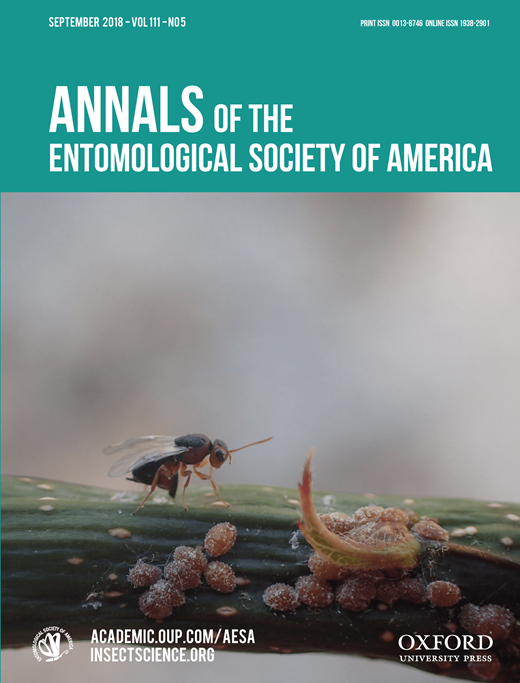View Item
- xmlui.general.dspace_homeCentros e Institutos de InvestigaciónCICVyA. Centro de Investigación en Ciencias Veterinarias y AgronómicasInstituto de GenéticaArtículos científicosxmlui.ArtifactBrowser.ItemViewer.trail
- DSpace Home
- Centros e Institutos de Investigación
- CICVyA. Centro de Investigación en Ciencias Veterinarias y Agronómicas
- Instituto de Genética
- Artículos científicos
- View Item
Plant chemicals and the sexual behavior of male tephritid fruit flies
Abstract
Plant compounds affect insects in many different ways. In addition to being a food source, plants also contain secondary metabolites that may have positive and negative impacts on insects. The influence of these compounds on sexual behavior, in particular, has been the focus of many recent studies. Here, we review the existing literature on the effects of plant compounds on the sexual behavior of tephritid fruit fly males. We put special focus on
[ver mas...]
Plant compounds affect insects in many different ways. In addition to being a food source, plants also contain secondary metabolites that may have positive and negative impacts on insects. The influence of these compounds on sexual behavior, in particular, has been the focus of many recent studies. Here, we review the existing literature on the effects of plant compounds on the sexual behavior of tephritid fruit fly males. We put special focus on polyphagous species whose males congregate in leks, where females exert strong mate selection. We first summarize the main findings related to plant compounds that increase male signaling behavior and attraction of females and consequently increase mating frequency, a phenomenon that has been recorded mainly for species of Anastrepha and Ceratitis. In other tephritid species, males are attracted to phenylpropanoids produced by plants (such as methyl eugenol or raspberry ketone) that, upon encounter, are consumed and sequestered by males. These compounds, or metabolic derivatives, which normally have negligible nutritional value, are included in the pheromone and also confer advantages in a sexual context: enhanced female attraction and improved male mating success. These phenomena have been reported for several Bactrocera species as well as for Zeugodacus cucurbitae. Because many tephritid species are serious pests, the effect of plant compounds on male behavior has been explored for potential incorporation into control strategies such as the sterile insect technique (SIT). We conclude noting several factors, such as age and nutrition during larval and adult stage, that modulate the effect of plant compounds on male mating behavior as well as some prominent gaps that preclude a thorough understanding of the plant-mediated enhancement of male sexual performance and hence limit our ability to effectively utilize phytochemicals in pest control strategies.
[Cerrar]

Author
Segura, Diego Fernando;
Belliard, Silvina Ahnahi;
Vera, María Teresa;
Bachmann, Guillermo Enrique;
Ruiz, María Josefina;
Jofre-Barud, Flavia;
Fernandez, Patricia Carina;
Lopez, M. Liza;
Shelly, Todd E.;
Fuente
Annals of the Entomological Society of America 111 (5) : 239-264 (Septiembre 2018)
Date
2018-09
Editorial
Oxford University Press
ISSN
0013-8746
1938-2901
1938-2901
Formato
pdf
Tipo de documento
artículo
Palabras Claves
Derechos de acceso
Abierto
 Excepto donde se diga explicitamente, este item se publica bajo la siguiente descripción: Creative Commons Attribution-NonCommercial-ShareAlike 2.5 Unported (CC BY-NC-SA 2.5)
Excepto donde se diga explicitamente, este item se publica bajo la siguiente descripción: Creative Commons Attribution-NonCommercial-ShareAlike 2.5 Unported (CC BY-NC-SA 2.5)


